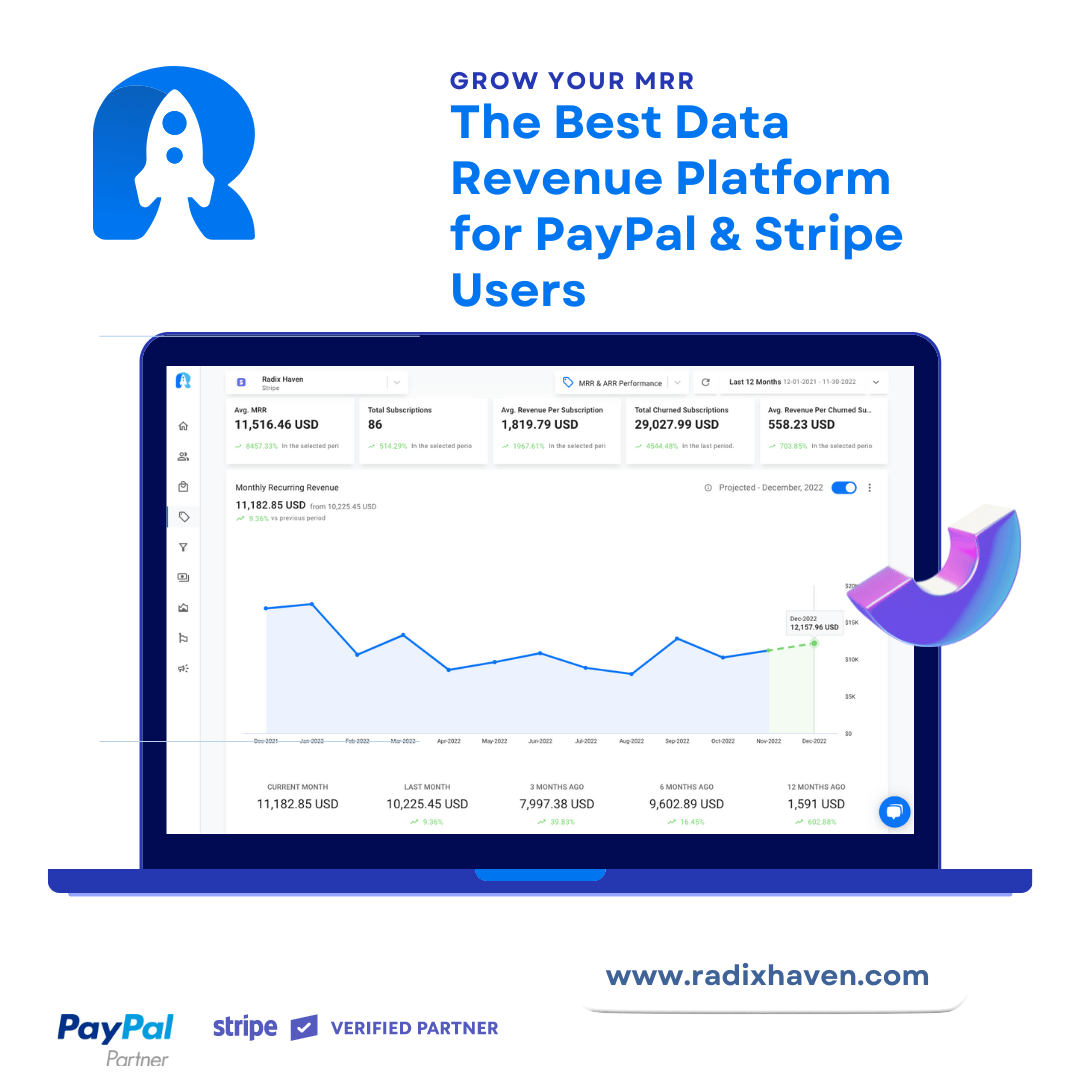Subscription-based software-as-a-service (SaaS) companies operate in a rapidly changing environment, which requires constant monitoring of key performance indicators (KPIs). Understanding reporting metrics is essential for identifying areas for improvement and optimizing business performance. In this article, we’ll explore the ten reporting metrics that every subscription SaaS company must track.
-
Monthly Recurring Revenue (MRR)
MRR is the core metric for measuring the health of a subscription business. It indicates the total recurring revenue generated by all active subscribers each month. Tracking MRR allows you to determine whether your business is growing or declining and helps you forecast revenue in the coming months.
-
Churn Rate
Churn rate refers to the percentage of customers who cancel their subscription during a specific period. Tracking churn rate is crucial for identifying retention issues and understanding customer behavior. A high churn rate can indicate a lack of customer satisfaction, a poor product-market fit, or inadequate customer support.
-
Customer Lifetime Value (CLTV)
CLTV is the total revenue a customer generates over the entire duration of their subscription. By tracking CLTV, you can identify your most valuable customers and tailor your marketing and retention strategies accordingly. It’s important to note that increasing CLTV is a more cost-effective approach than acquiring new customers.
-
Customer Acquisition Cost (CAC)
CAC is the total cost of acquiring a new customer, including marketing and sales expenses. Tracking CAC is essential for understanding the efficiency of your sales and marketing efforts. A high CAC can indicate that your customer acquisition strategy needs optimization.
-
Customer Acquisition Rate (CAR)
CAR is the number of new customers acquired during a specific period. Therefore, tracking CAR helps you understand the effectiveness of your customer acquisition strategy and how well your marketing and sales teams are performing.
-
Gross Margin
Gross margin is the revenue generated by a product or service minus the cost of goods sold. It indicates the profitability of a subscription business before considering operating expenses. Tracking gross margin is crucial for optimizing pricing strategies and controlling costs.
-
Monthly Active Users (MAU)
MAU is the number of unique users who engage with your product or service during a specific period. Tracking MAU helps you understand user behavior and engagement, which is essential for improving customer experience and retention.
-
Average Revenue Per User (ARPU)
ARPU is the average revenue generated by each user during a specific period. Tracking ARPU helps you understand the revenue potential of each user and how well you are monetizing your customer base.
-
Customer Engagement
Customer engagement refers to the level of interaction between customers and your product or service. Tracking customer engagement helps you understand how well your product or service is meeting customer needs and how you can improve customer experience.
-
Net Promoter Score (NPS)
NPS is a metric that measures customer loyalty and satisfaction. It asks customers to rate how likely they are to recommend your product or service to others. Therefore, tracking NPS helps you understand how well you are meeting customer needs and how likely they are to renew their subscription.
To Sum Up…
In conclusion, tracking these ten reporting metrics is essential for every subscription SaaS company. By monitoring these KPIs, you can identify areas for improvement, optimize pricing and marketing strategies, and improve customer experience and retention. Using a data analytics tool like Radix can make it easier to track and analyze these metrics, leading to overall business growth and success. So, if you haven’t already, it’s time to start tracking these metrics and boosting your KPIs with Radix.






